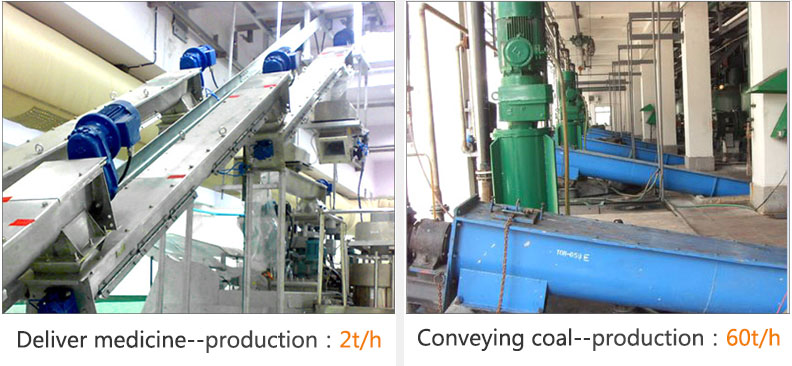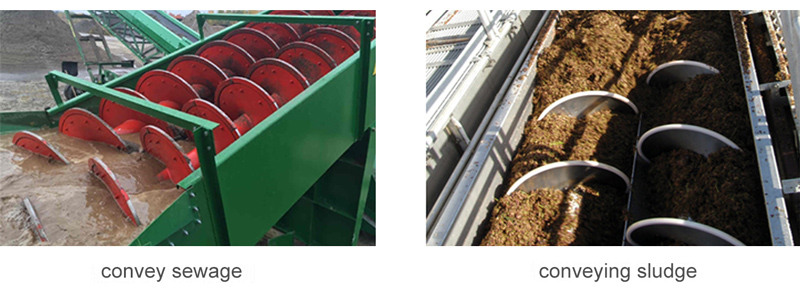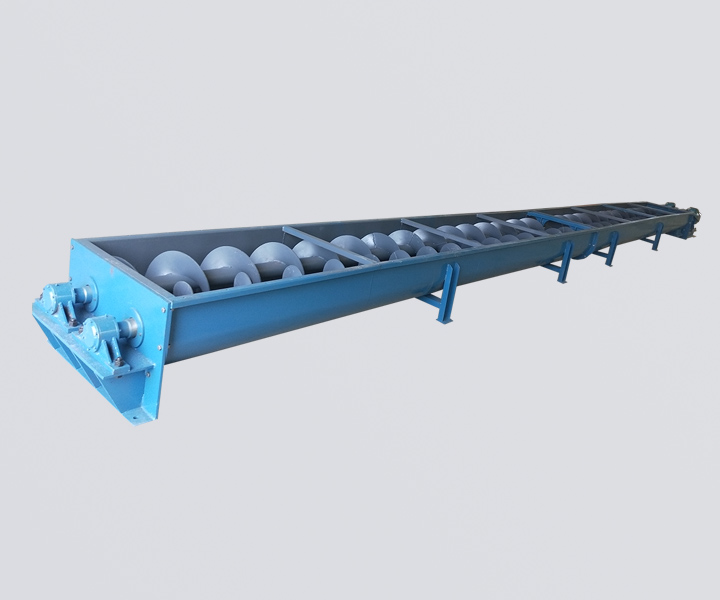
Paddle conveyors are mainly used for materials that need to be mixed in the process of moving to the destination. They are uniformly and quickly stirred/mixed. They are suitable for conveying materials with poor flow properties, large objects or large sizes that need to be stirred.
Type: single shaft / double shaft
Conveying capacity: 2.2-381m³/h
Length: 40-70 meters
Material: carbon steel, stainless steel
Application: For the mixing of chemicals and pharmaceuticals, flavors, minerals, sugar, pulp, etc.
Paddle conveyors, also called paddle screw conveyors, are conveyed by means of rotating helical blades to push material and can be single or double shaft, depending on the application and the material being conveyed/mixed, such as chemicals and pharmaceuticals, fragrances, minerals Conveying and mixing of substances, sugar, pulp, etc. to change its angle to control the speed of the material being executed and its mixing.
The paddles control the flow of material by effectively stirring and mixing the entrained material.
Paddle conveyor can be single-shaft or double-shaft. The paddle is made of flat surface and the thickness can reach 10mm. It is usually made of carbon steel and stainless steel. It generally operates in the horizontal direction and is suitable for feeding under the silo.
Paddle conveyors can be single-axis or dual-axis, depending on the application and the materials being conveyed/mixed.
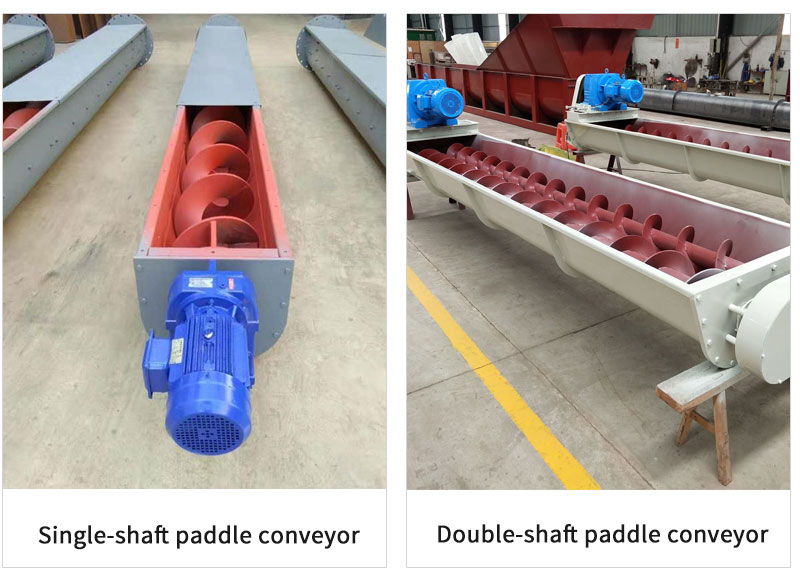
Single-shaft paddle conveyor: suitable for conveying dry or low-humidity powder and granular materials, and can be arranged horizontally and obliquely.
Double-shaft paddle conveyor: The two screw shafts rotate in opposite directions, and have mixing and stirring operations, that is, while conveying materials, they can also carry out continuous stirring. This type of double-shaft paddle conveyor is used for conveying that kind of flow performance. Poor, materials with large volume or size that need to be stirred are generally used in industries such as food processing and construction processing.

Paddle conveyors are typically used horizontally or at a slight slope as an efficient way to convey semi-solid materials, including food waste, wood chips, aggregates, grain, animal feed, boiler ash, meat and bone meal, municipal solid waste, and many others, which can be Various types of conveyors are produced according to customer requirements in all rice mills, flour mills, food, pharmaceutical, agricultural and engineering industries.
1. Homogeneous and fast stirring/mixing for the mixing of chemicals and drugs, spices, minerals, sugar, pulp, etc.
2. The conveying capacity is large, allowing a large amount of materials to be conveyed in a small space, with a conveying capacity of 381m³/hour.
3. It can realize sealed transportation, which is conducive to the transportation of easy-to-fly, hot and strong-smelling materials, which can reduce environmental pollution and improve the working conditions of port workers.
4. It is convenient to load and unload, and it can be loaded and unloaded at any point on its conveying line.
5. Flexible layout, can be arranged on elevated, ground or pit, can be installed horizontally or on a slope (≤15°), or can be installed horizontally and on a slope with the same machine, and can be loaded and unloaded at multiple points.
6. It can be conveyed in the reverse direction, and one conveyor can also convey materials in two directions at the same time, that is, to the center or away from the center.
| LS Type | 100 | 160 | 200 | 250 | 315 | 400 | 500 | 630 | 800 | 1000 | 1250 |
| GX Type | 200 | 250 | 300 | 400 | 500 | ||||||
| Spiral diameter(mm) | 100 | 160 | 200 | 250 | 315 | 400 | 500 | 630 | 800 | 1000 | 1250 |
| pitch(mm) | 100 | 160 | 200 | 250 | 315 | 355 | 400 | 450 | 500 | 560 | 630 |
| Rotating speed(r/min) | 140 | 120 | 90 | 90 | 75 | 75 | 60 | 60 | 45 | 35 | 30 |
| Delivery volume QΦ=0.33(m3/h) | 2.2 | 7.6 | 11 | 22 | 36.4 | 66.1 | 93.1 | 160 | 223 | 304 | 458 |
| power Pd 1=10m(KW) | 1.1 | 1.5 | 2.2 | 2.4 | 3.2 | 5.1 | 4.1 | 8.6 | 12 | 16 | 24.4 |
| power Pd 1=30m(KW) | 1.6 | 2.8 | 3.2 | 5.3 | 8.4 | 11 | 15.3 | 25.9 | 36 | 48 | 73.3 |
| Rotating speed(r/min) | 120 | 90 | 75 | 75 | 60 | 60 | 45 | 45 | 35 | 30 | 20 |
| Delivery volume QΦ=0.33(m3/h) | 1.9 | 5.7 | 18 | 18 | 29.1 | 52.9 | 69.8 | 125 | 174 | 261 | 305 |
| power Pd 1=10m(KW) | 1.0 | 1.3 | 2.1 | 2.1 | 2.9 | 4.1 | 4.7 | 6.8 | 9.4 | 14.1 | 16.5 |
| power Pd 1=30m(KW) | 1.5 | 2.3 | 4.5 | 4.5 | 7 | 8.9 | 11.6 | 20.4 | 28.3 | 42.2 | 49.5 |
| Rotating speed(r/min) | 90 | 75 | 60 | 60 | 45 | 45 | 35 | 35 | 30 | 20 | 16 |
| Delivery volume QΦ=0.33(m3/h) | 1.4 | 4.8 | 15 | 15 | 21.8 | 39.6 | 54.3 | 97 | 149 | 174 | 244 |
| power Pd 1=10m(KW) | 0.9 | 1.2 | 1.9 | 1.9 | 2.5 | 3.4 | 4.3 | 5.4 | 8.1 | 9.5 | 13.3 |
| power Pd 1=30m(KW) | 1.2 | 2.2 | 3.8 | 3.8 | 5.4 | 6.8 | 9.2 | 16 | 24.4 | 28.6 | 39.9 |
| Rotating speed(r/min) | 75 | 60 | 45 | 45 | 35 | 35 | 30 | 30 | 20 | 16 | 13 |
| Delivery volume QΦ=0.33(m3/h) | 1.2 | 3.8 | 11 | 11 | 17 | 31.7 | 46.5 | 73.0 | 99.3 | 139 | 199 |
| power Pd 1=10m(KW) | 0.75 | 1.1 | 1.6 | 1.6 | 2.1 | 3.1 | 3.7 | 4.6 | 5.7 | 7.7 | 11 |
| power Pd 1=30m(KW) | 1.1 | 1.8 | 3.4 | 3.4 | 4.4 | 5.6 | 8 | 14 | 16.7 | 23.2 | 33 |
Paddle conveyor is mainly composed of driving device, intermediate bearing, screw shaft, screw machine body, screw blade, head section, middle section, tail section, feeding and discharging devices and other components.
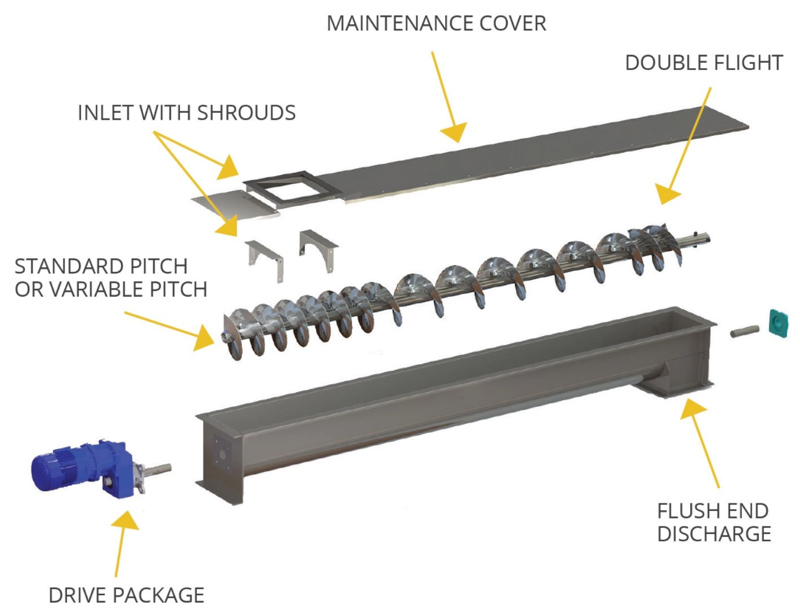
1. Driving device: It is composed of motor and decelerator. The driving motor is suitable for 380V, 3-phase, 50Hz. Its protection grade is IP55 (outdoor type), and its insulation grade is F grade. It is composed of gear reducer, with large torque, low noise and no oil leakage.
2. Intermediate hanging bearing: divided into two types:
①Head bearing: Thrust bearing: bear the axial force generated by the resistance of the conveying material, and place it in front of the material.
②Intermediate bearing: split sliding bearing, used to support the screw shaft.
3. Spiral shaft: It adopts hollow design and is made of steel pipe, which has high strength, light weight and easy connection. Use a short length of solid shaft at the shaft-to-shaft connection and where the bearing is mounted. Available in carbon steel or stainless steel.
Dahan paddle conveyors offer screws with fixed and adjustable paddles for mixing applications. The fixed paddle is welded directly to the center tube of the threaded rod. The adjustable propeller is welded to a bolt that goes through the center tube and is tightened with the lock nut on the other side.
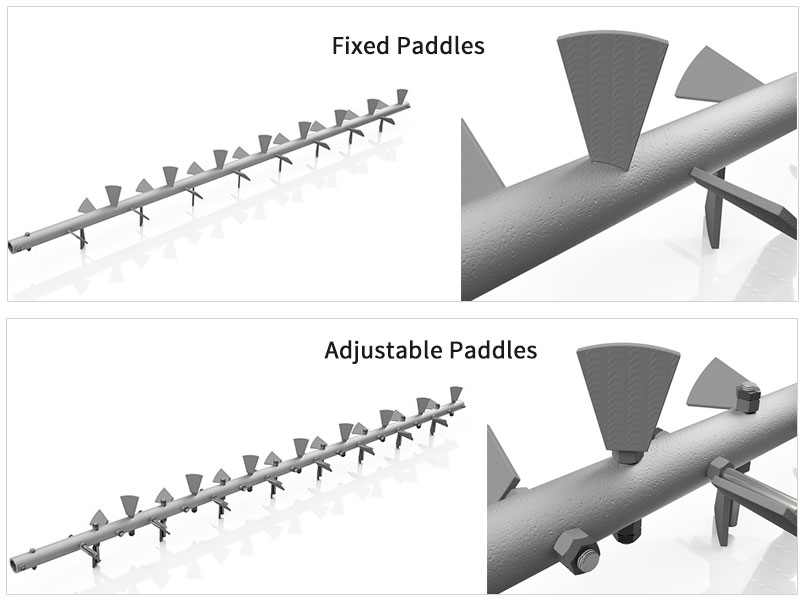
Fixed paddles: Screws with fixed paddles have a lower initial purchase cost compared to adjustable paddles. However, modifying the screws after fabrication and installation is very difficult. Since the paddles are fixed and not adjustable, you cannot "fine-tune" your mixing process.
Adjustable paddles: can be individually rotated to any desired angle to "fine-tune" your mixing process. However, initial production costs are higher compared to fixed propeller designs. Replacing adjustable propellers is easy for any maintainer.
